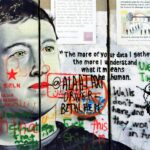Spending is (Still) Not the Solution
Nowadays it seems that politicians default to spending taxpayer’s money as their only way of “doing something”— but what about fixing all of the things that are broken?
It’s no secret that Social Security and Medicare are going to be insolvent by 2035. Instead of trying to fix this with serious reform, the federal government is focused on throwing money at the ongoing pandemic. Typically, the rule of thumb is, throwing money at something never solves anything.
This may seem too cavalier— but throwing money at COVID, beyond PPE and research investments, is not how we move forward successfully. It’s how we further bankrupt the U.S. and continue to threaten our own standing in the world.
Certain pandemic responses seemed appropriate at the time. Providing small businesses with the opportunity to continue paying their employees with the PPP loans was not the worst idea in the world. But the implementations of those loans were problematic, and not all small business owners who really needed the help, received it. Not to mention many individuals who didn’t necessarily need a loan, received one.
There were lots of other ways the government could have stepped in, or rather, stepped out. For example, not putting severe restrictions on businesses like restaurants, especially as we began to understand more about the virus and how it spreads. COVID does not spread on surfaces, a fact we’ve known for over a year. Yet we are still forcing businesses to use extreme cleaning measures that are both time consuming and costly.
Another idea gone awry was that both the Trump and Biden administrations agreed to circulate stimulus checks to many Americans. These checks were supposed to help “stimulate” the economy. But after the first check, nearly half of these funds went to paying personal debt. Making the credit card companies the only ones who truly benefited from this so-called “stimulus”.
Meanwhile, automatic entitlement systems like unemployment kept increasing too. In the early stages of the virus, many companies laid off employees, not knowing how the economy would react to such an unprecedented situation. This led to very high unemployment rates, for which the government was already obligated to pay for. Their response? Expanded unemployment benefits, even surpassing paychecks of the people still at work and thus removing many incentives for industries to stay afloat.
Arguably, the last time the United States faced a world-wide calamity of this magnitude was in World War II, in which the U.S. spent more than $4 trillion, after adjustment for inflation. We’ve already spent $5.3 trillion on COVID-19 stimulus bills. Our debt totals more than $22.5 trillion, and it seems unfathomable to continue racking up the bills for future generations.
The “fiscal stewards” of the past, the Republican party, failed to block this immense spending three times over. In fact, most Republican leaders didn’t disagree with the spending, just disagreed on how the money was spent.
Whether or not President Trump is really a fiscal conservative is another matter. But when he was in office, his defense spending bill totaled $738 billion— hardly small government. The Republicans in Congress passed and enabled this behavior, further showing how far they’ve pulled away from fiscal responsibility.
Now that both parties are proponents of big government, who is left to keep America from going bankrupt? The people keep voting in the same politicians, and those politicians are afraid to initiate some real reform for fear of losing an election. Perhaps congressional paychecks should end once Social Security benefits do.




